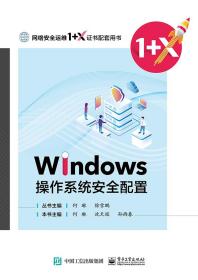
英译汉教程
¥ 1.5 八五品
库存56件
山东枣庄
认证卖家担保交易快速发货售后保障
作者连淑能 编著
出版社高等教育出版社
出版时间2007-12
版次1
装帧平装
货号9787040189384
上书时间2024-06-20
- 在售商品 暂无
- 平均发货时间 9小时
- 好评率 暂无
- 最新上架
商品详情
- 品相描述:八五品
- 正版旧书外观八成新左右里面部分笔记内容完好无损
图书标准信息
- 作者 连淑能 编著
- 出版社 高等教育出版社
- 出版时间 2007-12
- 版次 1
- ISBN 9787040189384
- 定价 30.00元
- 装帧 平装
- 开本 16开
- 纸张 胶版纸
- 页数 367页
- 字数 99999千字
- 正文语种 英语,简体中文
- 【内容简介】
- 《英译汉教程》将翻译理论课、技巧课和实践课融为一体,提供了一套可供课堂操作的英汉翻译基础教程。《英译汉教程》主要供高等院校英语专业本科高年级或同等程度的学生作为英汉翻译课在课堂教学中使用,也可供有同等英语水平的翻译自学者使用。
- 【作者简介】
- 连淑能,(1942-),厦门大学外文学院教授、博士生导师,荣获国务院颁发的政府特殊津贴。1996—1999年任厦门大学外文系系主任,1999—2003年任外文学院院长,现兼任中国英汉语比较研究会副会长、中国人文社会科学核心期刊《外语与外语教学》顾问和编委等。曾任驻外大使馆和专家组翻译,赴英国牛津大学和剑桥大学、美国俄勒冈大学和威拉姆特大学讲学、研究。荣获福建省“三育人先进个人”称号、厦门市优秀教师称号、厦门大学最高奖“南强奖”一等奖(合作)、厦门大学研究生“良师益友”称号等。主要研究方向为汉英语言与中西文化、翻译理论与技巧、跨文化交际学,已发表80多篇论文和18部论著、编著、译著,合作承担国家863计划课题“自然语言理解与机器翻译”,荣获20多项奖项。代表作《英汉对比研究》荣获国家教委颁发的第二届全国高等学校出版社优秀学术著作优秀奖、福建省第三届社会科学优秀成果一等奖,并被选送参加国际书展。
- 【目录】
-
Chapter1 GeneraIPrlnclples
1.1 What is Translation?
1.1.1 Linguistic Views on Translation
1.1.2 Cultural Views on Translation
1.1.3 Literary Views on Translation
1.1.4 Semantic Views on Translation
1.1.5 Functional Views on Translation
1.1.6 Communicative Views on Translation
1.2 The Assessment of Translation
1.2.1 Translation Criteria Put Forward by Famous Translators or Tra
1.2.2 Other Factors Affecting the Evaluation of Translation
1.2.3 Criteria for Beginners of Translation
1.2.4 Translation Proficiency: the Requirements of the Teach English Major
1.3 The Competence of a Translator
1.3.1 Excellent Command of the Two Languages
1.3.2 Considerable Knowledge of the Two Cultures
1.3.3 Adequate Knowledge of the Subject Matter
1.3.4 Fair Capacity for Writing
1.3.5 Plenty of Practice and Adequate Knowledge of Transl Skills
1.3.6 Skills in the Use of Information Technology
1.4 Translation Strategies
1.4.1 Literal Translation and Free Translation
1.4.2 Foreignizing Translation and Domesticating Translation
1.4.3 Style and Translation
1.5 Basic Processes in Translating
1.5.1 The Four-phase Process in Translating
1.5.2 Some Dos and Donts for Students
1.5.3 Procedures of Translation by a Team
Chapter 2 Contrastlve Studies of English and Chinese
2.1 Studies of the English Language
2.1.1 External History: Historical Information Related to the English Language
2.1.2 Internal History: a Linguistic Review
2.1.3 Some Characteristics of English
2.2 Studies of the Chinese Language
2.2.1 Some Major Factors Affecting the Chinese Language
2.2.2 Some Characteristics of Modern Chinese
2.3 English vs. Chinese: Ten Pairs of Features
2.3.1 Synthetic vs. Analytic (综合语与分析语)
2.3.2 Rigid vs. Supple (刚性与柔性)
2.3.3 Hypotactic vs. Paratactic (形合与意合)
2.3.4 Complex vs. Simplex (繁复与简短)
2.3.5 Impersonal vs. Personal (物称与人称)
2.3.6 Passive vs. Active (被动与主动)
2.3.7 Static vs. Dynamic (静态与动态)
2.3.8 Abstract vs. Concrete (抽象与具体)
2.3.9 Indirect vs. Direct (间接与直接)
2.3.10 Substitutive vs. Repetitive (替换与重复)
Conclusion
Chapter3 DIction(选词法)
3.1 Choice of Affective Meanings
3.2 Choice of Grammatical Meanings
3.3 Choice of Contextual Meanings
3.4 Choice of Collocative Meanings
3.5 Choice of Stylistic Meanings
3.6 Choice of Ambiguous Meanings
3.7 Choice of Extended Meanings
3.8 Choice of Equivalent Meanings
3.9 Choice of Exact Meanings
3.10 Choice of Different Chinese Words to Translate the Same English Word or Use of the
Same Chinese Word(s) to Translate Different English Words
Conclusion
Chapter 4 Conversion(转换法)
4.1 Conversion of Word Classes
4.2 Conversion of Sentence Members
4.3 Conversion of Impersonal Subjects
4.4 Conversion of Perspectives
Conclusion 1
Chapter 5 Addltion(增神法)
5.1 Structural Addition
5.2 Semantic Addition
5.3 RhetoricaI Addition
Conclusion 1
Chapter 6 Omission(省略法)
6.1 Omission of Words Peculiar to English
6.2 Omission of Words Superfluous in Chinese
Conclusion 1
Chapter 7 Repetition(重复法)
7.1 Grammatical Repetition 1
7.2 Rhetorical Reduplication and Repetition
Conclusion 1
Chapter 8 Invorslon(倒置法)
8.1 Inversion of Word Order in Translating Word-Groups or Phrases
8.2 Inversion of Word Order in Translating Attributes
8.3 Position of Adjective Clauses
8.4 Inversion of Adverbials 1
8.5 Position of Adverbial Clauses
8.6 Inversion of Sentence Structure
rnnchLlsinn
Chapter 9 Negation (反译法)
9.1 Transfer of the Negative
9.2 Conversion of the Affirmative into the Negative
9.3 Conversion of the Negative into the Affirmative
9.4 Translation of English Questions and Answers
9.5 Translation of Various Kinds of Negations
Conclusion
Chapter10 Dlvlslon(拆译法)
10.1 Picking Out of Words
10.2 Picking Out of Phrases
10.3 Splitting of Complex Sentences
10.4 Splitting of the Whole Sentence
Conclusion
Chapter11 Condensation(缩译法)
11.1 Condensation of Phrases and Clauses
11.2 Condensation of Complex Sentences into Simple Sentences
11.3 Condensation of Compound Sentences into Simple Sentences
11.4 Condensation of Two or More Simple Sentences into One Simple Sentence
Conclusion
Chapter 12 Translation of the Passive(被动与译法)
12.1 Features of the English Passive
12.2 Features of the Chinese Passive
12.3 Common Ways to Translate the English Passive
Conclusion
Chapter 13 Translation of Long Sentences(长句译法)
13.1 Features of Long English Sentences
Chapter 14 Translation of Culture-loaded Expressions
Chapter 15 Transaltion of Proper Nouns and Technical Terms
点击展开
点击收起
— 没有更多了 —












以下为对购买帮助不大的评价